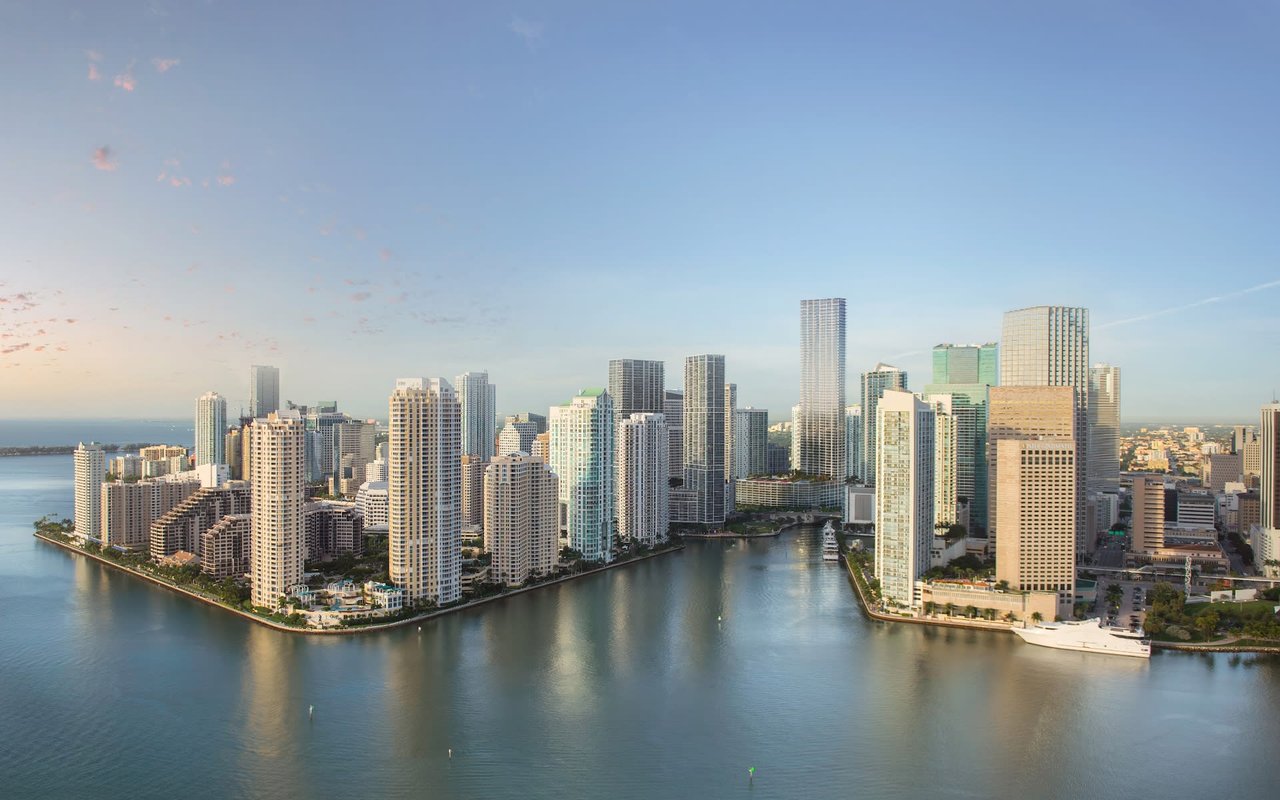Brickell is not only Miami's financial hub but also a repository of rich history, juxtaposing its modern skyscrapers with historical areas that tell the tale of its past. This guide takes you on a journey through Brickell's historical sites and current marvels, uncovering the various layers that contribute to the neighborhood's unique character and endless allure.
Discovering the History of Brickell
Brickell’s story began in the late 19th century when pioneers William and Mary Brickell established a trading post and post office, laying the foundations for what would become one of Miami’s most dynamic neighborhoods. The area was initially known for its lavish mansions and was often referred to as “Millionaire’s Row.” Over the decades, Brickell transformed into a major financial hub, but remnants of its storied past remain, offering intriguing insights.
The Miami Circle National Historic Landmark
At the heart of Brickell's historical narrative is the Miami Circle, a mysterious archaeological site discovered in 1998 that dates back approximately 2,000 years. This 38-foot diameter circle, etched into the limestone bedrock and containing 24 holes and numerous artifacts, is believed to be the footprint of a prehistoric Tequesta Indian structure. Its discovery at the mouth of the Miami River has shed light on one of Florida's earliest known civilizations, emphasizing the area's significance long before the advent of high-rises. Today, the Miami Circle is not only a National Historic Landmark but also a sacred site that reminds visitors of the deep historical roots beneath Brickell's modern facade.
Brickell Mausoleum
Within the serene confines of Mary Brickell Park, overlooking the shimmering waters of Biscayne Bay just south of the Miami Circle, stands the Brickell Mausoleum. This historic burial site is the final resting place of William and Mary Brickell, the area's pioneering settlers who played a crucial role in the development of Miami and Brickell. The mausoleum, a stark white structure amidst a lush green backdrop, serves as a memorial to the Brickell story and a tangible connection to the area's early days as a burgeoning community. It is a poignant reminder of the individuals whose vision and perseverance shaped the destiny of Brickell.
The Roads: Architectural Charm Meets Historic Ambiance
Just a stone's throw from the high energy of Brickell's main thoroughfares lies The Roads, a residential neighborhood known for its quiet streets, lush canopy, and distinctive early 20th-century homes. Designed by Mary Brickell in the 1920s as part of the area's original development, The Roads features wide avenues and roundabouts that deviate from the traditional grid pattern, creating a unique urban layout intended to be more pedestrian-friendly. The neighborhood's homes offer a visual journey through Miami's architectural evolution.
Simpson Park Hammock: Preserving Brickell's Natural Story
Simpson Park Hammock is a testament to Brickell's natural history, preserving a slice of Miami's original hammock ecosystem within its 7.8-acre boundary. This botanical oasis, home to a vibrant array of native plants and trees, some of which are rare and endangered, offers a window into the lush landscapes that once covered the area. The park's preservation efforts highlight the importance of maintaining a balance between urban development and environmental conservation, ensuring that Brickell's natural wonders continue to thrive alongside its architectural advancements.
Modern Brickell: Architectural Highlights
As Brickell continues to evolve, there is a growing emphasis on preserving its historical highlights amid ongoing modern development. Read on to discover a few notable architectural developments in Brickell.
Atlantis on Brickell
2025 Brickell Avenue
Atlantis on Brickell is a throwback to the anything-goes, pastel-colored excess of the 1980s. Rising 21 stories along the southern stretch of Brickell Avenue, Atlantis is symbolic of Miami's storied history of audacious architectural ventures and was one the first buildings to help usher in Brickell’s skyscraper era.
Designed and built in 1982 by the Miami-based international architectural firm Arquitectonica, this landmark luxury building is famous for its strikingly colorful facade and its whimsical "cutout" feature — a five-story square hole adorned with a red spiral staircase, a palm tree, and a Jacuzzi. Atlantis was featured prominently in the opening credits of the equally iconic 1980s TV show "Miami Vice," cementing its place among the most famous architectural landmarks on the Brickell real estate scene.
500 Brickell
500 Brickell Avenue
Another of Arquitectonica's Brickell designs, 500 Brickell features two identical 42-story towers atop a 10-story garage and retail base structure. Those first ten floors are visually arresting, featuring 700 colored circles cut into the north and south facades. The bold, brilliant display is an example of form and function, as the circles also serve as ventilation ports for the parking structure.
However, 500 Brickell's most distinctive architectural achievement is a 75-foot diameter oculus, which bridges the gap between the top of the two towers. Effectively creating one of the world's largest breezeways or one of its tallest pool decks, the circle motif invokes the nearby Miami Circle National Historic Landmark. Whether intentional or coincidence, it's a symbolic homage to the area's earliest architectural roots.
Brickell Arch
1395 Brickell Avenue
As one of the most artistically pleasing towers in the Brickell real estate landscape, the multipurpose Brickell Arch is a brilliant display of modern design and functionality. On its own, the 36-story mixed-use tower is a textbook display of intelligent urbanism. The Arch's glass-clad outer shell and highly flexible interior were far ahead of its 2004 construction and have allowed the building to take on many forms in its 20-year history.
Currently, the Brickell Arch integrates office and retail space, the Hotel AKA Brickell, and residential units occupying the top 10 floors. The masterfully subtle arch-formed relief sunken into the tower's Brickell Avenue facade is Brickell's own symbolic gateway, signifying the neighborhood's architectural evolution.
Brickell Avenue Bridge
449 Brickell Avenue
Spanning the Miami River, the Brickell Avenue Bridge is the primary thoroughfare between Downtown Miami and Brickell. The current drawbridge, built in 1995 and later widened in 2006, replaced the original expanse, which carried traffic across the river for nearly 70 years. Beyond its function of linking two of Miami's most vibrant neighborhoods, the bridge also offers an artful history lesson in the form of a statue created by Cuban artist Manuel Carbonell: "The Pillar of History." The 53-foot-tall historical column rises from the bridge's southeastern corner. It features bas-reliefs and statues that pay tribute to the Tequesta, Miami's first inhabitants, and six Miami pioneers and early founders.
Ready to Explore Brickell?
If you're ready to discover the allure of Brickell's high-end real estate, partner with expert agent David Freed today. With a top ranking in South Florida and a host of 5-star reviews, David is more than ready to help you achieve success.
*Header photo courtesy of David Freed
*Header photo courtesy of David Freed




